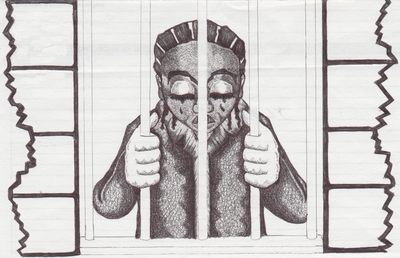
Book Review: Orange is the New Black, My Year in a Women's Prison
by Piper Kerman
Spiegel & Grau (March 8, 2011)
327 pages
This memoir by Piper Kerman, describes the experience of a well-off white womyn who served a year in a minimum-security Federal prison in Danbury, Connecticut. Kernan was locked up for drug trafficking and money laundering, crimes she committed 10 years before her conviction and self-surrender. This is not a story of the typical imprisonment of disadvantaged men and wimmin, disproportionately poor and from oppressed nations, but rather a memoir of a woman with a solid future who took a brief detour to prison and made a lot of money by writing a book about it. Most prisoners face a life after release haunted by their conviction which makes finding housing and jobs virtually impossible. While others in prison on her charges are labeled drug dealers and face long sentences, Kernan’s brief imprisonment is portrayed as the result of a period of reckless experimentation and mistakes of her youth.
Ordinarily a book like this wouldn’t hold much interest for MIM(Prisons), but it’s become quite a sensation after it was the basis for a popular Netflix TV series by the same name. This reviewer has only seen a few episodes of the TV show, but based on that i can say it’s only loosely based on the book. For instance, where the book has virtually no sex at all, the TV show is mostly sex and lots of sensationalism. The reality of boredom and mundane prison life wouldn’t make for a very interesting TV show.
On the positive side, Kernan humanizes the wimmin who she meets in prison, and gives their lives voice by pointing out the unjust drug sentences and devastating effects prison has on families. The TV show also provides a human face to its characters, when they aren’t having sex or acting in some stereotypical role, but given the general portrayal of prisoners as evil and dangerous this is at least a small improvement. Of course, none of those wimmin get book deals, and for the most part they also don’t have jobs lined up, or homes in New York bought by fiancées who visit religiously every week, along with hoards of other people who visit and write throughout their imprisonment. Kernan does admit her volume of mail greatly exceeds everyone else. And she spends a few pages reflecting on the fact that some wimminn she meets face lives on the outside just as difficult as their lives behind bars.
Part of humanizing the wimmin in Danbury’s Federal Correctional Institution includes telling stories of their kindness towards fellow prisoners. In this regard the TV show overplays violence and conflict between the prisoners relative to the book. Kernan explains the deep friendships and support the wimmin offer each other in this minimum security prison, and overall she sees their humynity and does not try to portray Amerikan prisons as a place that is offering any rehabilitation or value for prisoners.
Both the book and the TV show condemn the prison guards for their brutality and degradation of the prisoners. The reality of Kernan’s experience in the book does describe some guards who clearly enjoy their sadistic power, and overall she maintains a strong anti-pig position even when someone is cutting her a break.
Overall this book doesn’t contribute much to those seeking to understand the conditions in prison and fight the criminal injustice system. It advances the finances and career of one well-off white womyn, and if anything we learn that prisons are built to lock up poor people, mostly from oppressed nations, and imprisonment of people like Kernan is a fluke that rarely happens and registers little damage to their lives.









